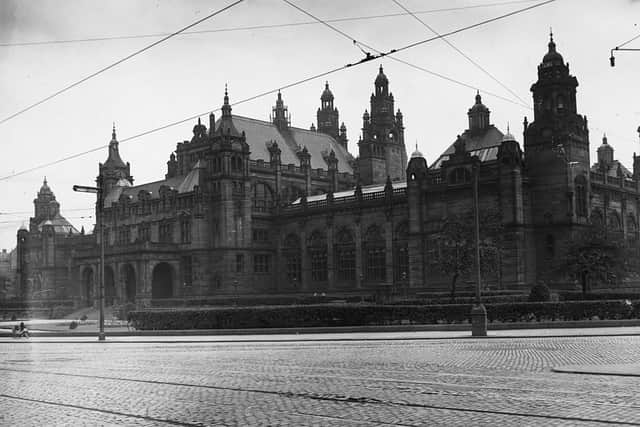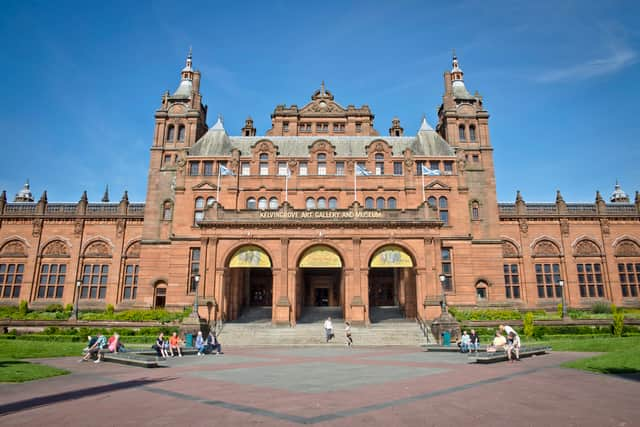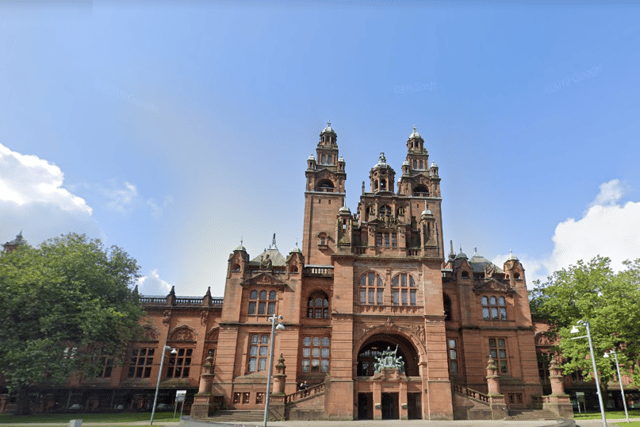Is Kelvingrove Art Gallery and Museum built back to front? Glasgow’s Kelvingrove urban myths explained
and live on Freeview channel 276
Kelvingrove Art Gallery and Museum is one of Glasgow's proudest public spaces, but a popular urban myth about the building remains to this day.
In honour of one of Glasgow's favourite heritage buildings, we thought we’d answer some frequently asked questions about Kelvingrove - as well as putting to bed one of Glasgow’s longest standing urban legends.
When was Kelvingrove Art Gallery and Museum built?
Advertisement
Advertisement
Over a century old, the art gallery and museum was built at the very end of the Victorian era in 1901.
It was partly funded by the proceeds of the 1888 International Exhibition held in Kelvingrove Park. When the Exhibition closed in November 1888, the final attendance figure was nearly 5.75 million. A profit of £43,000 was made - most of which went towards building Kelvingrove.
Kelvingrove
There was a much shorter lived ‘Kelvingrove Museum’ which opened in 1876, it was housed in the former home of Lord Provost, Patrick Colquhoun.
Who lived in Kelvingrove Museum?
Patrick Colquhoun lived in Kelvingrove Museum, a different now demolished site, north-east from the current Kelvingrove Art Gallery and Museum.
Advertisement
Advertisement
The Scottish noble was a descendant of the Scottish Clan Colquhoun of Luss - who was majorly involved in co-ordinating Glasgow’s regiments in the American Civil War against the U.S. seperatists.
It was in 1782 he purchased an estate in the West End - most of which we know know as Kelvingrove Park. He would construct Kelvingrove House, which would go on to become Kelvingrove Museum in 1876.
Between 1782 and 1784, Patrick Colquhoun ran the city as the Lord Provost of Glasgow. He also founded the Glasgow Chamber of Commerce and Manufacturing during that time - making himself the first chairman.


Who built Kelvingrove Art Gallery and Museum?
The gallery was designed by Sir John W. Simpson, who also built the original Wembley Stadium, and E.J. Milner Allen, who designed many of the biggest hospitals across the North of England.
When did Kelvingrove Art Gallery and Museum open?
Advertisement
Advertisement
Kelvingrove as we know it today opened in 1901 as the ‘Palace of Fine Arts’ for the Glasgow International Exhibition, held in the same year between May 2 and November 4.
Kelvingrove was obviously the crowning jewel of the exhibition, but other exhibitions included a switchback railway, a water chute, an Indian theatre and soap sculptures. The only remaining
The fair was visited by the King of Siam and by Empress Eugenie, the head of France and wife of Napoleon III, not to be confused with his more historically prominent uncle, Napoleon Bonaparte.
The land used for the exhibition became Kelvingrove Park, and the only remaining legacy of the exhibition is the Saracen Fountain, which now sits in Alexandra Park in the East End, and two cottages based on a village near Liverpool called Port Sunlight - which remain in Kelvingrove Park to this day, although they are not accessible to the public.
What style of architecture is the Kelvingrove Art Gallery and Museum?
Advertisement
Advertisement
Kelvingrove obviously stands out from the usual architecture typical of Glasgow at the time - most of which was built in the Victorian Art Noveau style or the ‘Glasgow Style’ headed by Charles Rennie Mackintosh.
So to stand out, Kelvingrove was built in the Spanish Baroque style, but was still constructed using Locharbriggs red sandstone - in keeping with the traditional Glaswegian style.
Was Kelvingrove Art Gallery and Museum built back to front?
One of Glasgow’s biggest and most enduring urban legends is that Kelvingrove was accidentally built back to front. Some versions of the story take it even further, claiming one of the architects died to suicide by throwing themself from one of the towers after experiencing such despair over his mistake.


To debunk the myth, no Kelvingrove was not built back-to-front. The grand entrance was always intended to face towards Kelvingrove Park - as that was where the Glasgow International Exhibition was held, and Kelvingrove Park was always intended to be a lofty space for the people after the exhibition was wrapped up.
Advertisement
Advertisement
The original remit for the architectural competition for Kelvingrove Art Gallery and Museum stipulated that the front and main entrance should face north into Kelvingrove Park, and not south onto Dumbarton Road
Neither of the leading architects died to suicide either, both led architectural careers spanning well into the 20th century before dying of natural causes.


It’s understandable that people would think the building was built back to front however, given that today most people enter from the south side from Dumbarton Road. The truth is, given how symmetrical the building is, you can enter from either end and it’s just as grand.
